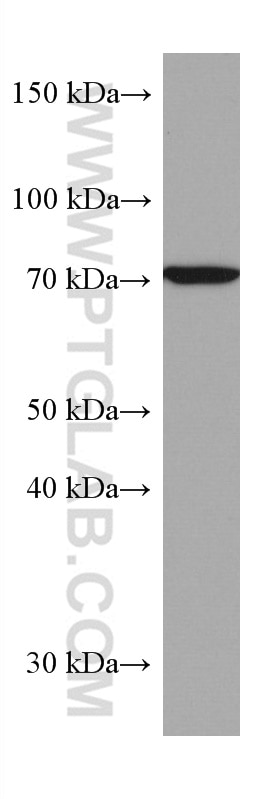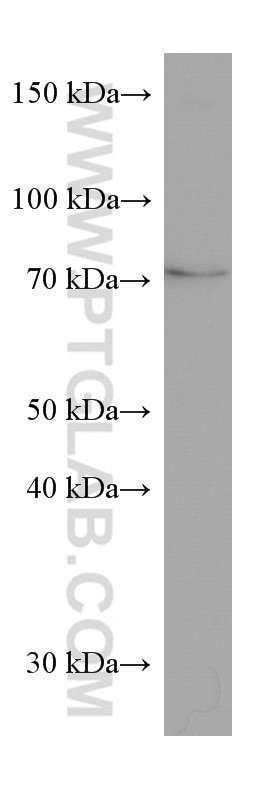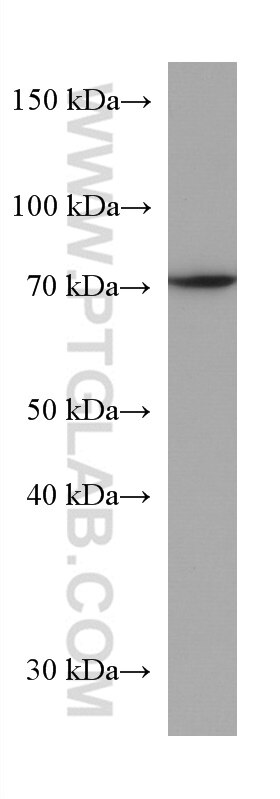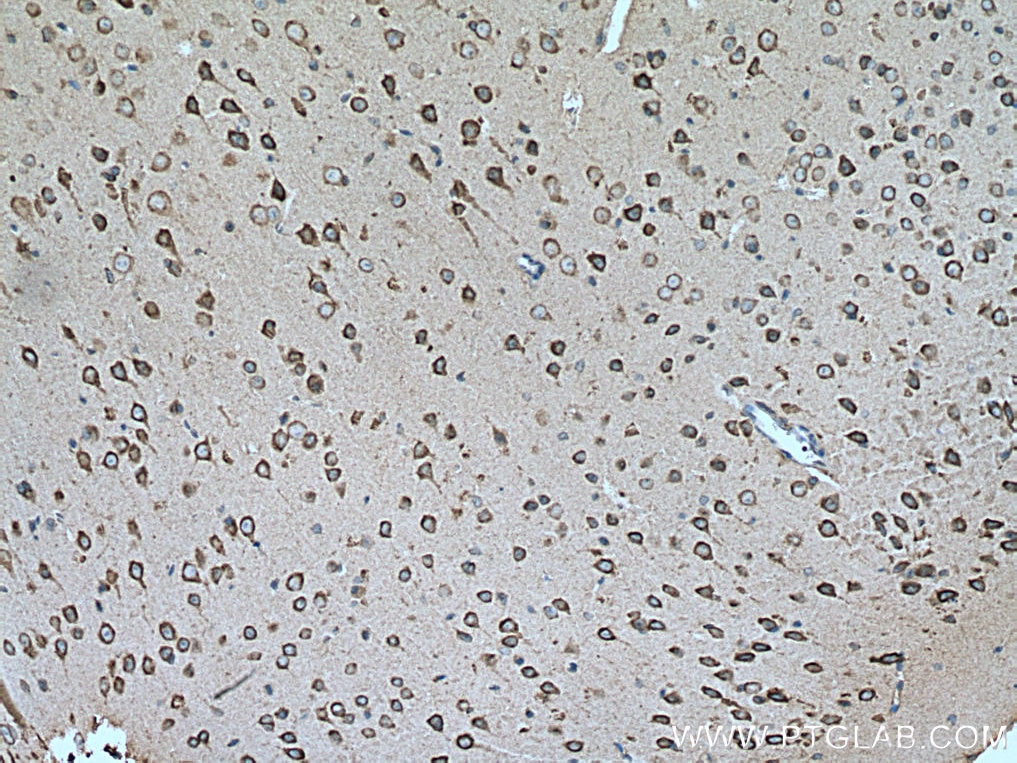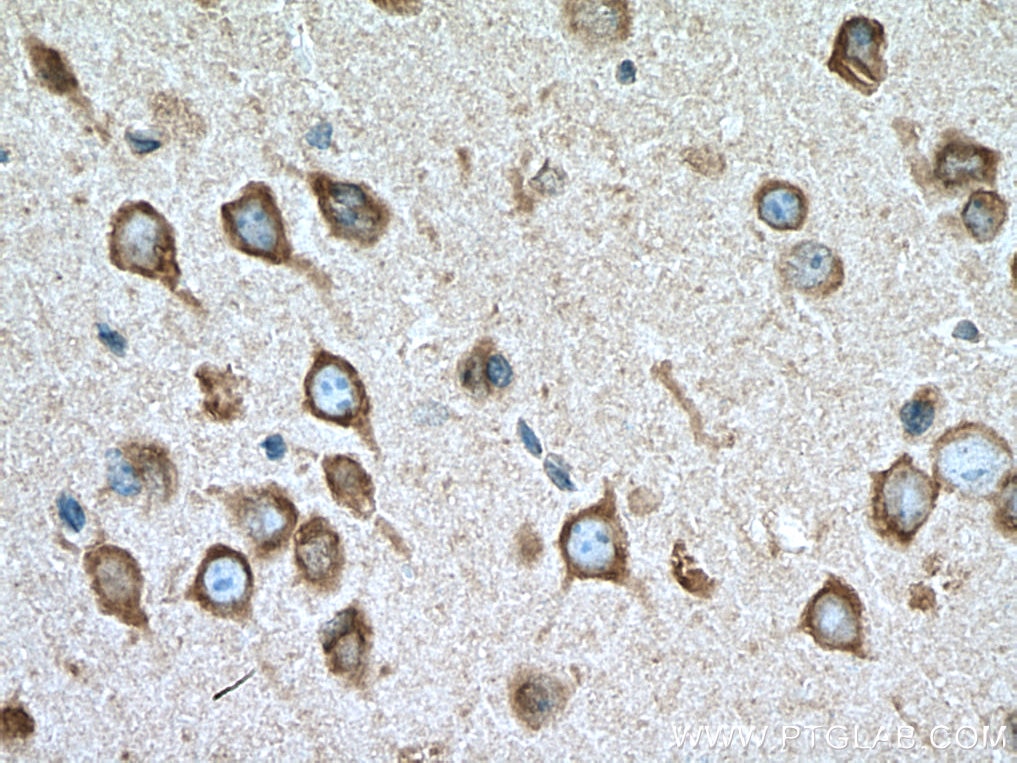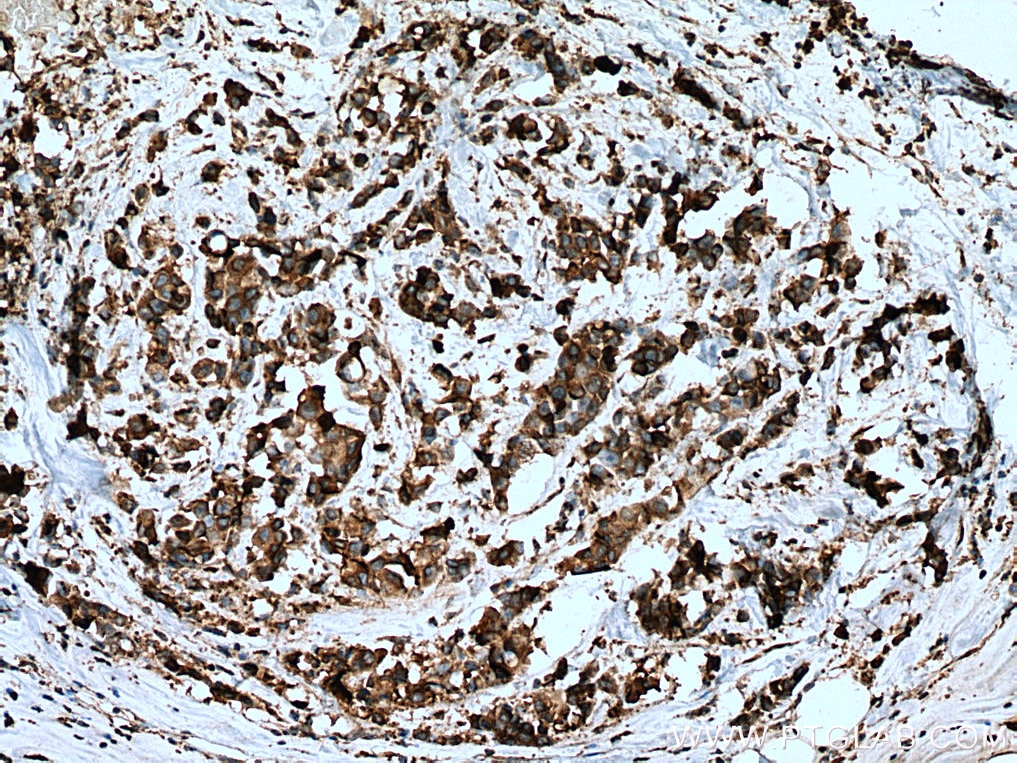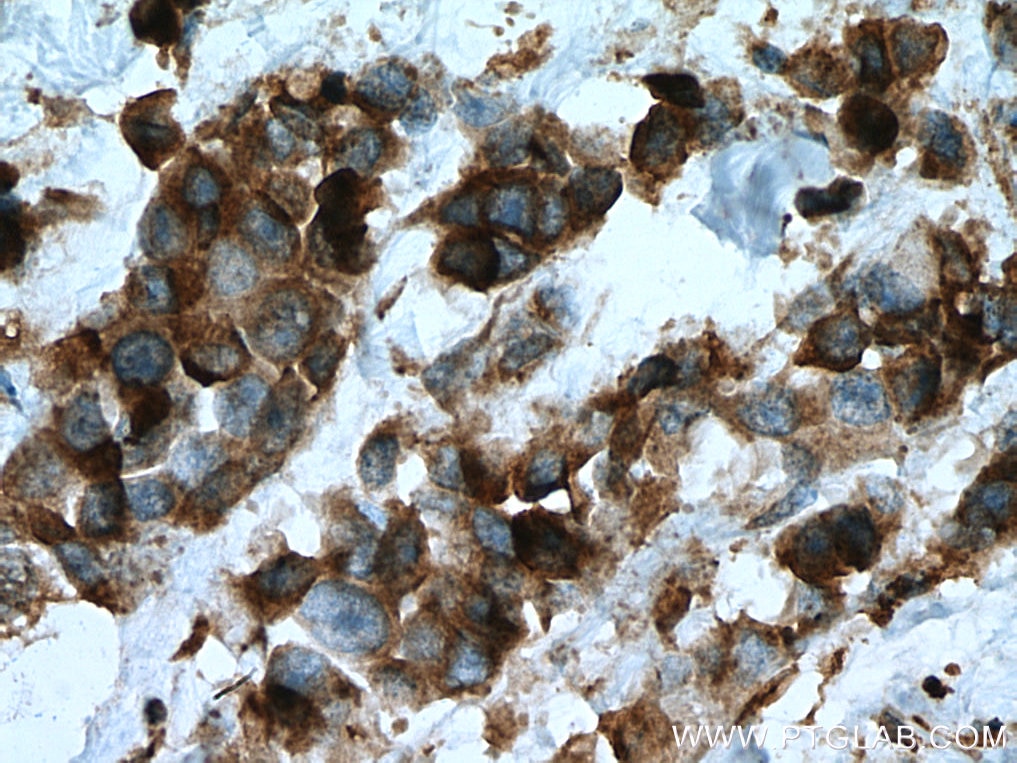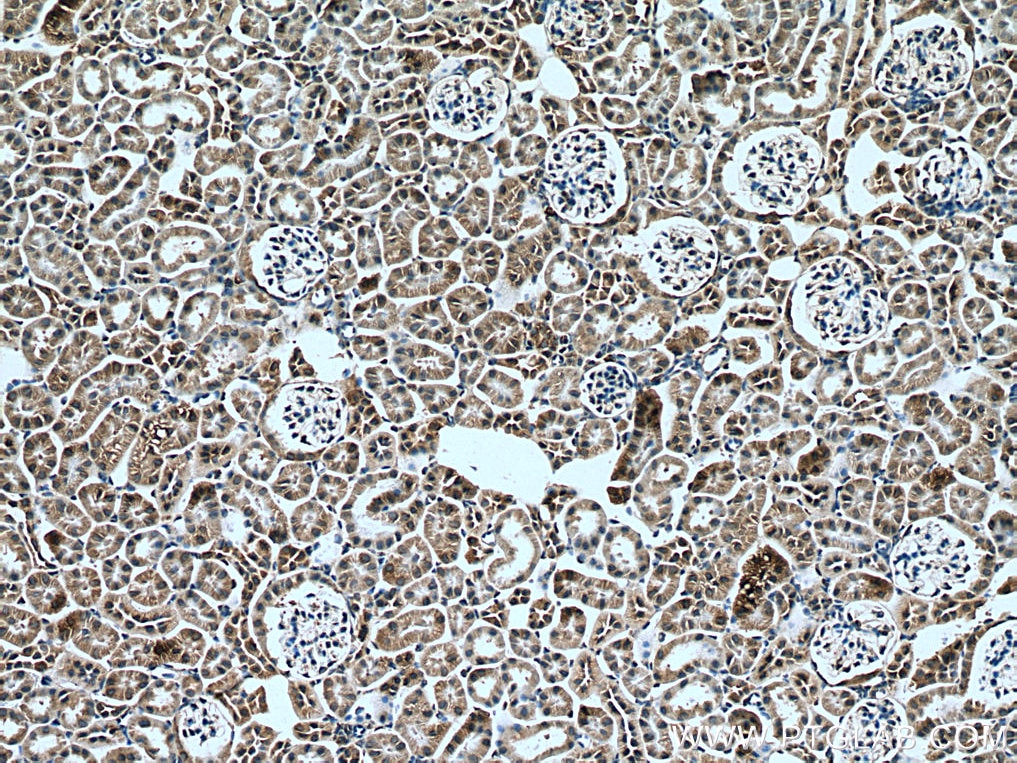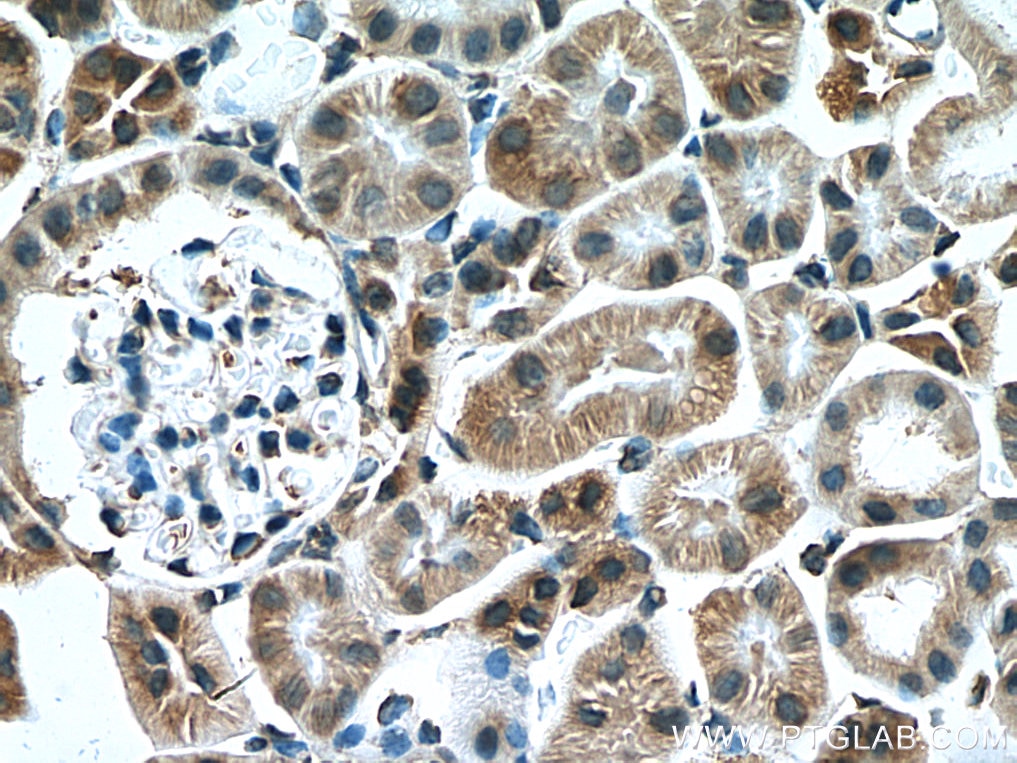Tested Applications
| Positive WB detected in | LNCaP cells, A431 cells, Jurkat cells |
| Positive IHC detected in | mouse brain tissue, human breast cancer tissue, mouse kidney tissue Note: suggested antigen retrieval with TE buffer pH 9.0; (*) Alternatively, antigen retrieval may be performed with citrate buffer pH 6.0 |
Recommended dilution
| Application | Dilution |
|---|---|
| Western Blot (WB) | WB : 1:1000-1:4000 |
| Immunohistochemistry (IHC) | IHC : 1:150-1:600 |
| It is recommended that this reagent should be titrated in each testing system to obtain optimal results. | |
| Sample-dependent, Check data in validation data gallery. | |
Published Applications
| IF | See 1 publications below |
Product Information
67467-1-Ig targets SLC25A12 in WB, IHC, IF, ELISA applications and shows reactivity with Human, Mouse samples.
| Tested Reactivity | Human, Mouse |
| Host / Isotype | Mouse / IgG1 |
| Class | Monoclonal |
| Type | Antibody |
| Immunogen | SLC25A12 fusion protein Ag13576 Predict reactive species |
| Full Name | solute carrier family 25 (mitochondrial carrier, Aralar), member 12 |
| Calculated Molecular Weight | 75 kDa, 63 kDa |
| Observed Molecular Weight | 70-75 kDa |
| GenBank Accession Number | BC016932 |
| Gene Symbol | SLC25A12 |
| Gene ID (NCBI) | 8604 |
| RRID | AB_2882696 |
| Conjugate | Unconjugated |
| Form | Liquid |
| Purification Method | Protein G purification |
| UNIPROT ID | O75746 |
| Storage Buffer | PBS with 0.02% sodium azide and 50% glycerol , pH 7.3 |
| Storage Conditions | Store at -20°C. Aliquoting is unnecessary for -20oC storage. 20ul sizes contain 0.1% BSA. |
Protocols
| Product Specific Protocols | |
|---|---|
| WB protocol for SLC25A12 antibody 67467-1-Ig | Download protocol |
| IHC protocol for SLC25A12 antibody 67467-1-Ig | Download protocol |
| Standard Protocols | |
|---|---|
| Click here to view our Standard Protocols |
Publications
| Species | Application | Title |
|---|---|---|
Nat Commun Decoding the mechanical characteristics of the human anterior cruciate ligament entheses through graduated mineralization interfaces |
